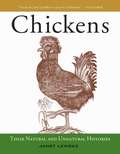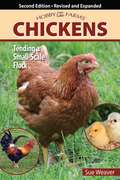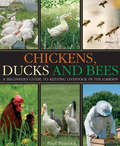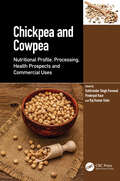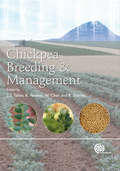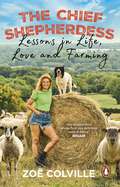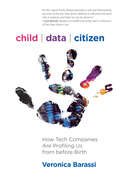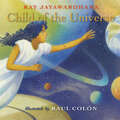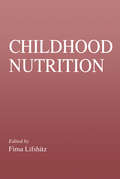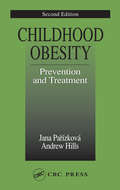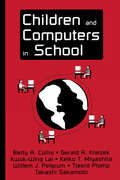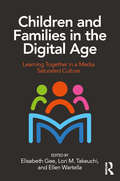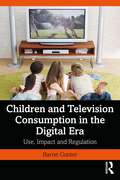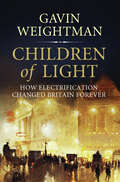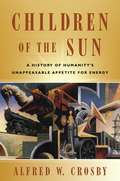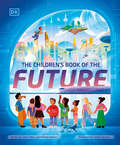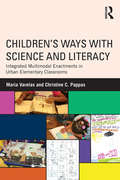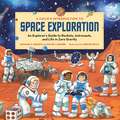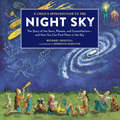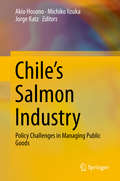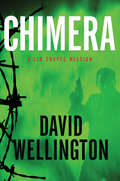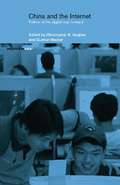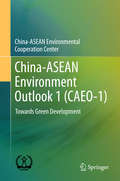- Table View
- List View
Chickens: Their Natural and Unnatural Histories
by Janet LembkeFramed by the author’s personal experience with backyard hens, Chickens: Their Natural and Unnatural Histories explores the history of the chicken from its descent from the dinosaurs to the space-age present. En route, Lembke surveys chickens in ancient Greece, the Middle Ages, the Renaissance, the nineteenth century, and modern times, including the role of chickens in Jewish and Muslim practices. She also investigates the birds’ contributions to science and their jaunty appearances in literature. Eggs receive a chapter of their own, as does chicken cuisine, comprising recipes from the Roman Empire to today’s favorites. Stories about chickens appear, too, often written by those who keep them, including the painter Grandma Moses, the man who holds Cleveland’s Farm Animal Permit No. 17, and Brenda, who had to give her young roosters a talking-to for behaving like sheep. Chickens have only recently come to a sorry pass in the Western world, where broilers and laying hens are factory-farmed. Lembke investigates the fate of such birds and explores the sustainable, humane alternatives to raising birds for meat and eggs. A celebration of the chicken in its every aspect, Chickens is sure to delight the chicken fancier, the backyard chicken keeper, and everyone concerned about where our food comes from and how we can treat animals more compassionately.
Chickens
by Sue WeaverHobby Farms Chickens: Tending a Small-Scale Flock for Pleasure and Profit is geared toward the hobby farmer looking to begin his or her own flock of chickens on a small farm or even backyard. Author Sue Weaver, who keeps various exotic breeds and countless barnies on her farm, is an expert on all things livestock and an avowed chicken fanatic. This photo-filled guide begins with "Chickens 101" and details the physiology of chickens, members of the Phasianidea family, providing beginning hobby farmers with a basic education in the chicken's unique physical makeup (from wings and feathers to beaks and digestive tracts), behavior, mating, and its unexpected high intelligence. The author offers advice on choosing the right types of chickens to get started: meat, egg, or dual purpose, or maybe even "just for pets." The book is an excellent resource for selecting which breed of chicken is best for the hobby farmer, based on the birds' traits, such as aggression, personality, noise factor, tolerance for heat, confinement, cold, etc. Chickens also provides information on selecting or building a suitable chicken coop for the hobby farmer's brood, outlining the basic requirements (lighting, ventilation, flooring, waterers, insulation, safety, and so forth). A detailed chapter on feeding chickens offers essential guidance on nutrition, commercial feeds, supplements, and water requirements. For the chicken hobby farmer looking to start with a clutch of baby chicks (from his own hen or an outside source), the author provides excellent info on incubators and hatching as well as all of the accommodations and preparation required for hens in the nest box. A chapter on selling eggs and broilers provides timetables, requirements, and dos and don'ts to get a hobby farmer's business off on the right foot. All chicken keepers will find the chapter on health of particular value, with expert advice on preventing common problems and dealing various maladies and diseases. Much detailed information about all of the topics in the book is encapsulated in sidebars. A glossary of over 125 terms plus a detailed resource section of chicken and poultry associations, books, and websites complete the volume. Fully indexed.
Chickens, Ducks and Bees: A Beginner's Guide To Keeping Livestock In The Garden
by Paul PeacockGrowing your own vegetables often leads gardeners to want to go one step further and keep some livestock. Chickens, ducks and bees are the most likely candidates for the first time livestock owner - especially if you live in a town or have only a small amount of land. They can all be kept happily together. Keeping these animals is a fun and absorbing hobby and is a great antidote to stress. There is nothing more rewarding than the collection of your own fresh eggs and honey. The book is full of sound, practical advice and looks at exactly what you need to get started: the equipment, housing, space and feed. Taking the breeds best suited for the smaller garden, town garden, or allotment, the responsible care and management of these animals is thoroughly covered in a friendly, approachable style with their welfare always in mind. Chickens: from breed selection to housing, feeding, care, and health issues this book provides simple, no nonsense information about how hens live, their needs and lifestyle and how to keep happy, healthy and productive hens. Ducks: here is all you need to know to introduce these entertaining animals to the garden - their walking requirements, their feed, and the surprisingly small amount of water they need. Duck eggs are great for baking and this book shows you how to keep your ducks happy and laying. Bees: there are many more people now interested in keeping bees. Paul Peacock shows you how to get started, where to get help, what equipment you need, and how to handle bees and harvest their honey. It emphasises gentle bees, and covers the control of varroa and other potential bee diseases.
Chickens, Ducks and Bees: A beginner's guide to keeping livestock in the garden
by Paul PeacockGrowing your own vegetables often leads gardeners to want to go one step further and keep some livestock. Chickens, ducks and bees are the most likely candidates for the first time livestock owner - especially if you live in a town or have only a small amount of land. They can all be kept happily together. Keeping these animals is a fun and absorbing hobby and is a great antidote to stress. There is nothing more rewarding than the collection of your own fresh eggs and honey. The book is full of sound, practical advice and looks at exactly what you need to get started: the equipment, housing, space and feed. Taking the breeds best suited for the smaller garden, town garden, or allotment, the responsible care and management of these animals is thoroughly covered in a friendly, approachable style with their welfare always in mind. Chickens: from breed selection to housing, feeding, care, and health issues this book provides simple, no nonsense information about how hens live, their needs and lifestyle and how to keep happy, healthy and productive hens. Ducks: here is all you need to know to introduce these entertaining animals to the garden - their walking requirements, their feed, and the surprisingly small amount of water they need. Duck eggs are great for baking and this book shows you how to keep your ducks happy and laying. Bees: there are many more people now interested in keeping bees. Paul Peacock shows you how to get started, where to get help, what equipment you need, and how to handle bees and harvest their honey. It emphasises gentle bees, and covers the control of varroa and other potential bee diseases.
Chickpea and Cowpea: Nutritional Profile, Processing, Health Prospects and Commercial Uses
by Sukhvinder Singh Purewal Pinderpal Kaur Raj Kumar SalarLegumes can act as good sources of nutrients, especially for those who are suffering from protein related nutritional deficiency. Chickpea (Cicer arietinum) and cowpea (Vigna unguiculata) are annual legumes grown throughout the world as food and feed. The presence of specific nutrients with many health benefits makes them a valuable food commodity. Chickpea and Cowpea: Nutritional Profile, Processing, Health Prospects and Commercial Uses explores the status of chickpea and cowpea in terms of their production, nutritional composition, processing mediated changes, and methods to remove antinutrients, bioactive peptides and their related health benefits. This book also demonstrates the key features of chickpea and cowpea which will make them an ideal substrate to be processed at a commercial scale. It covers all the aspects of latest research based on chickpea and cowpea. Features - Discusses information related to biochemistry of chickpea and cowpea components - Highlights comprehensive and meaningful information related to physical and functional properties - Explains processing mediated changes in nutritional profile of chickpea and cowpea - Provides latest scientific facts related to chickpea and cowpea starch - Explores various bioactive components and related health benefits - Demonstrates storage conditions for chickpea and cowpea In depth information is presented regarding various nutrient components and health benefits of chickpea and cowpea, which will provide meaningful information for product formulation. This book covers all aspects of recent research about the chickpea and cowpea while unravelling the hidden industrial potential of chickpea and cowpea.
Chickpea Breeding and Management
by B. Sharma S. S. Yadav R. J. Redden W. ChenThis authoritative account by international experts covers all aspects of chickpea breeding and management, and the integrated pest management and biotechnology applications that are important to its improvement.
The Chief Shepherdess: Lessons in Life, Love and Farming
by Zoe Colville‘Funny, gutsy and heartfelt.’ Daily MailZoë Colville spent years in a fancy hair salon with a long list of clients, living on cigarettes, croissants, and a shoestring. It was everything she'd ever wanted. But when an unexpected and overwhelming loss caused her life to shift unexpectedly, she found herself on a different path. One where the only use for a hairdryer is warming new-born lambs; where the cycle of life on a farm gives new meaning on purpose, and where nature is both a strict teacher and a balm to soothe the pressures of everyday life.Zoë is now a full-time farmer, business owner and activist. In this memoir, she speaks vivaciously, humorously, and candidly about the lessons learned along the way, from mental health, social media and identity to surviving as an entrepreneur in a shifting economy. And through those lessons - in love, loss, and lambing - discovering something even more important: that it's always the right time to take a bold step and try something new.'I grab the motionless lamb, which is frighteningly slippery, and scramble on my feet, swinging its little body around to help it breathe. I see its chest move, then it sneezes and starts breathing. It's stunned by the delivery experience. As am I. I'm high on adrenaline. Tears are streaming down my face. I pop the lamb down on the ground and start frantically rubbing its tiny body... Looking back, I can see that this was one of the first moments of questioning whether I'm truly cut out for farming, realising that the answer might be... yes!'
Child Data Citizen: How Tech Companies Are Profiling Us from Before Birth
by Veronica BarassiAn examination of the datafication of family life--in particular, the construction of our children into data subjects.Our families are being turned into data, as the digital traces we leave are shared, sold, and commodified. Children are datafied even before birth, with pregnancy apps and social media postings, and then tracked through babyhood with learning apps, smart home devices, and medical records. If we want to understand the emergence of the datafied citizen, Veronica Barassi argues, we should look at the first generation of datafied natives: our children. In Child Data Citizen, she examines the construction of children into data subjects, describing how their personal information is collected, archived, sold, and aggregated into unique profiles that can follow them across a lifetime.
Child of the Universe
by Ray JayawardhanaPerfect for fans of The Wonderful Things You Will Be and That's Me Loving You, this picture book by a renowned astrophysicist is a lyrical meditation on the preciousness of one child and the vastness of the universe.Just like the sun gives shine to the moon,you light up the world beyond this room . . .You are grand and marvelous, strong and mysterious.The history of the world is in your fingertips.A lyrical meditation on the preciousness of one child and the vastness of the universe, this gorgeously illustrated picture book shares the immensity of a parent's love along with the message that we are all connected to the broader cosmos in important and intimate ways. A perfect bedtime read-aloud, Child of the Universe is a book to cherish forever.The author is an astrophysicist who has been fascinated by the universe since he was a child. As a parent, he has developed a new appreciation for the deep connections between billions of years of cosmic evolution and this one tiny human.
Childhood Nutrition (Modern Nutrition Ser. #7)
by Fima LifshitzAn invaluable resource, Childhood Nutrition provides accurate facts on current concepts in pediatric nutrition, including theories of nutrition in the pathophysiology of disease and in developing nutritional healthcare plans. Written by an outstanding group of specialists, each chapter is thoroughly researched and referenced.
Childhood Obesity Prevention and Treatment (Modern Nutrition)
by Jana Parizkova Andrew HillsChildhood Obesity Prevention and Treatment, Second Edition summarizes the latest scientific knowledge on obesity in children. This edition focuses on the developmental aspects of obesity, especially on the influences and factors predisposing individuals to obesity from early periods of life. This new body of knowledge stems from both basic
Children and Computers in School
by Kwok-Wing Lai Gerald A. Knezek Betty A. Collis Keiko T. Miyashita Willem J. PelgrumThis volume integrates research findings from three multinational studies conducted to examine the impact of children's use of computers in school. Conclusions are drawn from in-depth analyses of trends in more than 20 nations. Its seven authors from four nations were key researchers on these projects. Both a study and a product of the information age, this work is of prime importance to teachers, teacher educators, and school administrators. This work is unique in three important ways: * it presents data gathered in many regions of the world; * many of the authors are well-known and respected for their previous work in educational studies; and * the chapters are designed in such a way that the majority of the book is easily accessible to professionals such as classroom teachers who are interested primarily in findings, results, and outcomes rather than the methodology of the research.
Children and Families in the Digital Age: Learning Together in a Media Saturated Culture
by Ellen Wartella Elisabeth Gee Lori TakeuchiChildren and Families in the Digital Age offers a fresh, nuanced, and empirically-based perspective on how families are using digital media to enhance learning, routines, and relationships. This powerful edited collection contributes to a growing body of work suggesting the importance of understanding how the consequences of digital media use are shaped by family culture, values, practices, and the larger social and economic contexts of families’ lives. Chapters offer case studies, real-life examples, and analyses of large-scale national survey data, and provide insights into previously unexplored topics such as the role of siblings in shaping the home media ecology.
Children and Television Consumption in the Digital Era: Use, Impact and Regulation
by Barrie GunterChildren and Television Consumption in the Digital Era provides a comprehensive analysis of contemporary research on the developmental impact of children’s screen engagement in modern society. Barrie Gunter explores how the world of television has evolved to become almost unrecognisable from the broadcast landscapes present over the last years of the 20th century. This key text considers how screen-based entertainment has become increasingly interactive, and how children have become accustomed to creating their own television schedules through streamed services. It explores key topics including screen experiences and the manifestation of prosocial and antisocial behaviour, advertising and the development of consumerism, and the evidence of screen time on a child’s health and school performance. Gunter insightfully assesses television content that children are exposed to and its impact on cognitive and behavioural development. Featuring commentary on the challenges regulators face to keep up with rapidly developing screen technologies and suggestions on how parents can mediate their children’s screen behaviour, this text is an essential read for researchers and students taking courses in child development, family studies, broadcasting and communication.
Children of Light: How Electricity Changed Britain Forever
by Gavin WeightmanIn the early 1870's a nighttime view over Britain would have revealed towns lit by the warm glow of gas and oil lamps and a much darker countryside, the only light emanating from the fiery sparks of late running steam trains. However, by the end of this same decade,Victorian Britons would experience a new brilliance in their streets, town halls, and other public places. Electricity had come to town. In Children of Light, Gavin Weightman brings to life not just the most celebrated electrical pioneers, such as Thomas Edison, but also the men such as Rookes Crompton who lit Henley Regatta in 1879; Sebastian Ziani de Ferranti, a direct descendant of one of the Venetian Doges, who built Britain's first major power station on the Thames at Deptford; and Anglo–Irish aristocrat, Charles Parsons inventor of the steam turbine, which revolutionized the generating of electricity. Children of Light takes in the electrification of the tramways and the London Underground, the transformation of the home with "labor saving" devices, the vital modernizing of industry during two world wars, and the battles between environmentalists and the promoters of electric power, which began in earnest when the first pylons went up. As Children of Light shows, the electric revolution has brought us luxury that would have astonished the Victorians, but at a price we are still having to pay.
Children of the Sun: A History of Humanity's Unappeasable Appetite for Energy
by Alfred W. CrosbyStory of humanities use of energy through the ages
The Children's Book of the Future
by Lavie Tidhar Richard WatsonA Children's Book of the Future is a narrative nonfiction book that will offer an inclusive and hopeful vision of the future, with a diverse, multicultural approach that will appeal to children of all backgrounds and further appeal to the foreign market audience.The book will consist of approximately eighteen chapters that each take inspiration from current scientific research. They'll present engaging, optimistic futures that could result from the real-world science, with insets delving into how that science works. The book will be highly illustrated throughout to make complex ideas more accessible, as well as to better depict the wondrous futures that could be ahead. There will also be a preface, afterword and an activities section.Some of the diverse visions explored include underwater cities; the solar system and space travel; green technologies and sustainability; robots and artificial intelligence; the future of cities; and much more!In short, the book sets out to reclaim the future for current and future generations of children.
Children's Ways with Science and Literacy: Integrated Multimodal Enactments in Urban Elementary Classrooms
by Christine C. Pappas Maria VarelasScience is often a forgotten subject in early elementary grades as various mandates require teachers to focus on teaching young students to achieve specific reading and mathematical competencies. This book offers specific examples and empirical evidence of how integrated science-literacy curriculum and teaching in urban primary-grade classrooms give students opportunities to learn science and to develop positive images of themselves as scientists. The Integrated Science-Literacy Enactments (ISLE) approach builds on multimodal, multidimensional, and dialogically oriented teaching and learning principles. Readers see how, as children engage with texts, material objects, dialogue, ideas, and symbols in their classroom community, they are helped to bridge their own understandings and ways with words and images with those of science. In doing so, they become learners of both science and literacy. The book features both researcher and teacher perspectives. It explores science learning and its intersection with literacy development in schools that educate predominately children of color, many of whom struggle with poverty and have been traditionally underestimated, underserved, and underrated in science classrooms. In all these ways, this volume is a significant contribution to a critically under-researched area of science education.
A Child's Introduction to Space Exploration: An Explorer's Guide to Rockets, Astronauts, and Life in Zero Gravity (A Child's Introduction Series)
by Michael E. Bakich David J EicherGet ready to blast off into the space! This interactive, fact-filled book by two space experts takes kids aged 8-12 on a journey through the universe with answers to all their questions on space exploration--from what the first rockets looked like and the first animal in space to what space food tastes like and what it&’s like to live in zero gravity. We are living in a golden age of astronomy and space exploration, with more discoveries about the universe every day. With so many possibilities now open to us, revered science writers Michael E. Bakich and David J. Eicher will take young readers on a journey to the throughout the universe in this latest edition of A Child&’s Introduction series.Perfect for budding explorers aged 8-12, Bakich and Eicher explore the history of space exploration from the very first rocket in China, to the moon landing, to the latest missions to Mars (and beyond). They also include profiles of noteworthy scientists, engineers, and astronauts including Isaac Newton, Neil Armstrong, Mae Carol Jemison; fun sections on space food, UFOs, a timeline of space suits, and how to go to the bathroom in space; and STEM experiments like how to build your own rocket and how to tell time using the sun. Packed with dozens of NASA photos and charming original illustrations, and a pull-out poster, this fascinating book reveals the wonders of space exploration—past, present and future!
A Child's Introduction to the Night Sky: The Story of the Stars, Planets, and Constellations--and How You Can Find Them in the Sky (A Child's Introduction)
by Meredith Hamilton Michael DriscollThis charming exploration of the night sky -- featuring a star finder and glow-in-the-dark stickers -- which has more than a quarter of a million young astronomers enjoying the night sky in countries around the world, is now completely revised and updated. A Child's Introduction to the Night Sky is the perfect introduction to the always fascinating world of astronomy. Children ages eight and up will find out what astronomers have learned (and are still discovering), what astronauts and scientists explore, and what they can find by gazing up into the sky at night. Author Michael Driscoll explains how stars are born, the achievements of the great scientists, the history of space exploration, the story of our solar system, the myths behind the constellations, how to navigate the night sky, and more. Whimsical color illustrations throughout and handy definitions and sidebars help engage younger readers and develop their interest. Also included are a nifty star finder tool and fun glow-in-the-dark stickers.
Chile's Salmon Industry: Policy Challenges in Managing Public Goods
by Akio Hosono Michiko Iizuka Jorge KatzThis book is the first to analyze Chile's salmon farming industry in discussing industrial development in terms of the management of public goods. The book highlights important aspects of learning and capacity development, environmental sustainability, institutions, and social welfare or inclusiveness. With aquaculture now providing almost half the global fish harvest, Chile's salmon farming and processing industry stands out as a leader in the new "blue revolution". Taking a holistic, historic approach to understanding the evolutionary development of the industry, the authors employ this strategy in the belief that policy discussions of economic activities have become highly segmented and often provide only a partial picture. Such segmentation is problematic for policy studies based on a complex web of interactions among numerous agents. The present volume untangles this web by considering the development of the Chilean salmon industry not only in holistic and historic terms but also from a socioeconomic point of view. The valuable book offers insightful lessons that can be applied to other natural resource-based sectors facing similar challenges in the course of development. Normal 0 false false false EN-US JA X-NONE /* Style Definitions */ table. MsoNormalTable {{mso-style-name:標準の表; mso-tstyle-rowband-size:0; mso-tstyle-colband-size:0; mso-style-noshow:yes; mso-style-priority:99; mso-style-parent:""; mso-padding-alt:0cm 5. 4pt 0cm 5. 4pt; mso-para-margin-top:0cm; mso-para-margin-right:0cm; mso-para-margin-bottom:10. 0pt; mso-para-margin-left:0cm; line-height:115%; mso-pagination:widow-orphan; font-size:11. 0pt; font-family:"Calibri","sans-serif"; mso-ascii-font-family:Calibri; mso-ascii-theme-font:minor-latin; mso-hansi-font-family:Calibri; mso-hansi-theme-font:minor-latin;}}
Chimera
by David WellingtonAfghanistan veteran Jim Chapel has been enlisted in a new war.This time it's in his own backyard . . . and even more deadly.A small band of fugitives escapes from a secret upstate New York military facility, leaving a trail of bodies in its wake. Each fugitive has a target--an innocent civilian--and will not stop until that target has been eliminated.Wounded Special Forces veteran Jim Chapel has been stuck behind a desk rather than out in the field, but medical technology has finally caught up with his ambitions. Coupled with his unstoppable determination, it will take him back to where he thrives: the thick of the action.Drafted into a new war, this time in our homeland, Chapel is tasked with hunting a group of escapees from a top secret military compound--all extremely deadly, genetically modified killers--and unraveling the mystery behind their existence. Aided by an enigmatic woman named Angel and a courageous, beautiful veterinarian, Chapel begins a cross-country hunt to stop the murders. But are the killers really rogues, or are they part of a sinister conspiracy that reaches into the highest levels?
Chimera
by David WellingtonA band of genetically modified killers has smashed out of a secret military facility in upstate New York, and Special Forces veteran Jim Chapel gets to puzzle out whether theyre renegades or part of a high-up conspiracy. Author of the "Monster Island" trilogy, serialized online zombie novels, Wellington is currently working toward a degree in Library Science at the Pratt Institute.
China and the Internet: Politics of the Digital Leap Forward (Politics in Asia)
by Christopher R. Hughes Gudrun WackerChina and the Internet: Politics of the Digital Leap Forward is a comprehensive assessment of the political and economic impact of information and communication technologies (ITCs) on Chinese society. It provides in-depth analyses of topics including economic development, civil and political liberties, bureaucratic politics, international relations and security studies.The book covers the aspirations of Chinese policy-makers using the Internet to achieve a 'digital leapfrog' of economic development. Avoiding technical jargon, the book is accessible to anyone interested in the social impact of the Internet and information and communication technologies, from those in academia to business and public policy-makers.
China-ASEAN Environment Outlook 1 (CAEO-1)
by China-ASEAN Environmental CooperationThis book presents a comprehensive analysis of the status and progress of China-ASEAN green development and examines the common development issues in China and ASEAN Member States (AMSs). It also explores development trends within the framework of global and regional environmental governance and discusses the approaches towards green development in China and AMSs, offering its own definition of green development and using a “pressure-state-response” (PSR) model to build a framework for assessing green development. The book includes typical policy measures and numerous practices for green development in China and AMSs in the form of tables, figures and boxes. Based on detailed analysis, it argues that the global 2030 Agenda for Sustainable Development brings significant opportunities to China and AMSs, that the ongoing pragmatic cooperation should be further advanced, and that a connection between the Belt and Road Initiative and green ASEAN Community should be established to achieve regional sustainable development. As such it furthers readers’ understanding of environment and development and practical policy advice for promoting China-ASEAN cooperation on environment and green development. Intended for decision makers from the government, business sector, and civil societies who are working to boost green development and China-ASEAN cooperation, it is also a valuable resource for government officials, researchers and non-experts interested in creating a balanced relationship between the environment and development.
